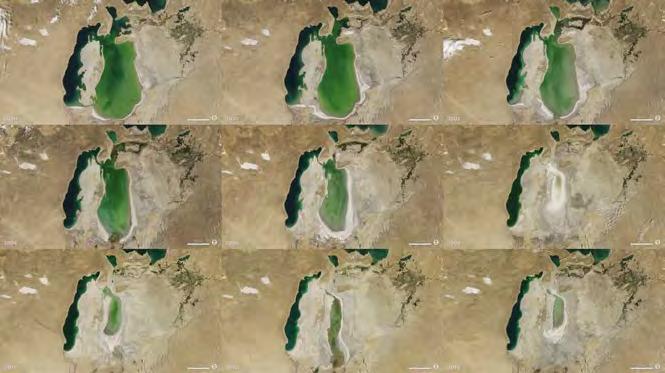
2 minute read
1.8 The cost of cotton
1 What is this infographic communicating?
Estimated water required in the production of cotton clothing
✓ Collaboration ✓ Communication ✓ Analysis
1 ×
1 × + =
20,000 litres of water 2 Read the information. Answer the questions.
• Which process uses the most water? • What percentage of water is used to make the jeans?
Water used in the lifecycle of a pair of jeans 3 These satellite images of the Aral Sea were taken between 2000 and 2013.
a How has the landscape changed? b Read the text and answer these questions. • What is the issue? • What is the cause? • What is the consequence?
7% = making the item 68% = growing cotton or producing synthetic fi bres 23% = washing by the consumer 2% = packaging and otherSample Pages
What went wrong?
Cotton is the biggest non-food crop. The World Wildlife Fund says that it takes 20,000 litres to make just 1 kg of cotton. That’s a lot of water! These images show the results of cotton farming around a large lake. Although the land was good for growing cotton, there was not enough water or rainfall for the farming process. The water needed to grow cotton plants caused water levels to drop. This important fi shing lake is now a desert, with poisonous salt and a very hot climate. People are trying to bring this area back to life but there is no quick solution. It will take a long time for the water to rise, fi sh to return, and for the quality of water and for the local climate to improve.
Vocabulary
4 Research issues with cotton farming World Wildlife Fund: an international and clothing. organisation that tries to protect a Read the information on the worksheet. Highlight the main issues, causes and consequences of making animals and habitats in danger poisonous: something that can hurt or kill living things cotton clothing.
Pesticides and fertilisers: Farmers use chemicals to help cotton grow and keep insects away. If not used well, these can pollute the water and harm locals. b Summarise the information on causes and consequences in a table.
Causes Consequences
Chemicals are used to grow and protect cotton. Chemicals can pollute water and harm locals.
5 Draw and present an ‘issue tree’. Core problem:
a Use your research to Cottonmake an ‘issue tree’. Show the growing can causes and consequences to the damage the environment of growing cotton. environment. b Present your issue tree to the class. Give other groups Root causes: Too feedback on how well they much water used and communicated their information. not enough rainwater. Are you a good team player? Explain how you helped your team today.
Effects: Land becomes a desert – no fi sh, poisonous Sample Pagessalt and local climate changes.
Talking point











